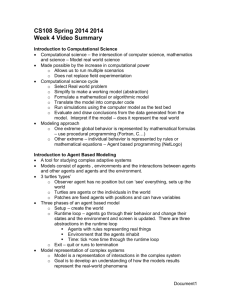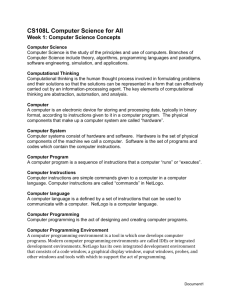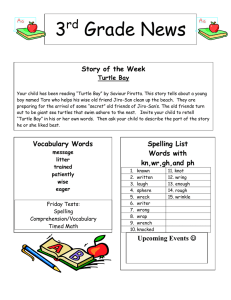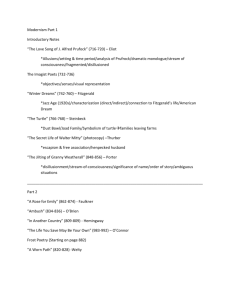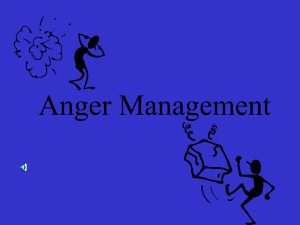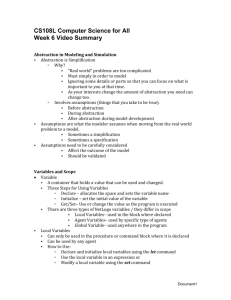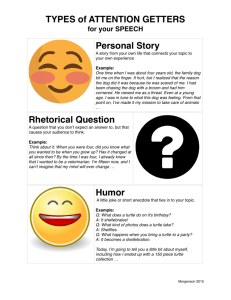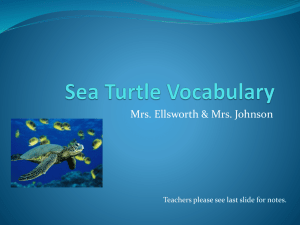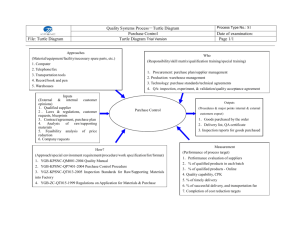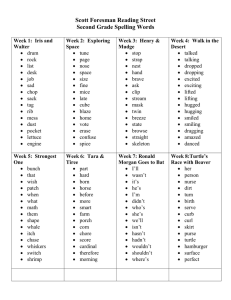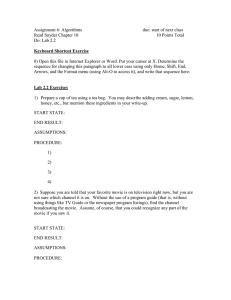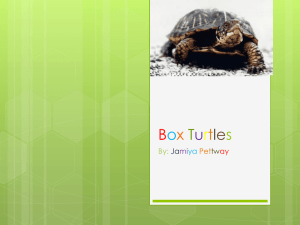CS Concepts Summary (.doc) - New Mexico Computer Science for All
advertisement
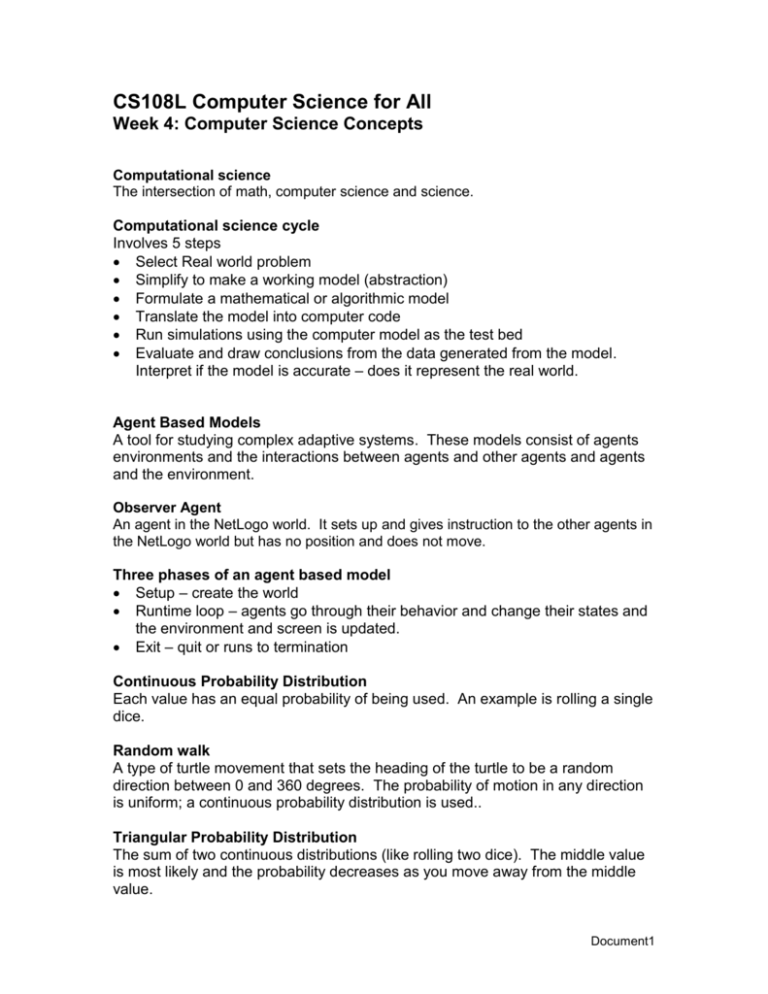
CS108L Computer Science for All Week 4: Computer Science Concepts Computational science The intersection of math, computer science and science. Computational science cycle Involves 5 steps Select Real world problem Simplify to make a working model (abstraction) Formulate a mathematical or algorithmic model Translate the model into computer code Run simulations using the computer model as the test bed Evaluate and draw conclusions from the data generated from the model. Interpret if the model is accurate – does it represent the real world. Agent Based Models A tool for studying complex adaptive systems. These models consist of agents environments and the interactions between agents and other agents and agents and the environment. Observer Agent An agent in the NetLogo world. It sets up and gives instruction to the other agents in the NetLogo world but has no position and does not move. Three phases of an agent based model Setup – create the world Runtime loop – agents go through their behavior and change their states and the environment and screen is updated. Exit – quit or runs to termination Continuous Probability Distribution Each value has an equal probability of being used. An example is rolling a single dice. Random walk A type of turtle movement that sets the heading of the turtle to be a random direction between 0 and 360 degrees. The probability of motion in any direction is uniform; a continuous probability distribution is used.. Triangular Probability Distribution The sum of two continuous distributions (like rolling two dice). The middle value is most likely and the probability decreases as you move away from the middle value. Document1 Wiggle Walk A type of turtle movement that models the movement of a larger animal. The wiggle walk involves the use of a random right and a random left turn in the same step. The resulting probability distribution for the direction of the turtle is a triangular probability distribution center around zero, i.e. the turtle tends to move straight. Document1
